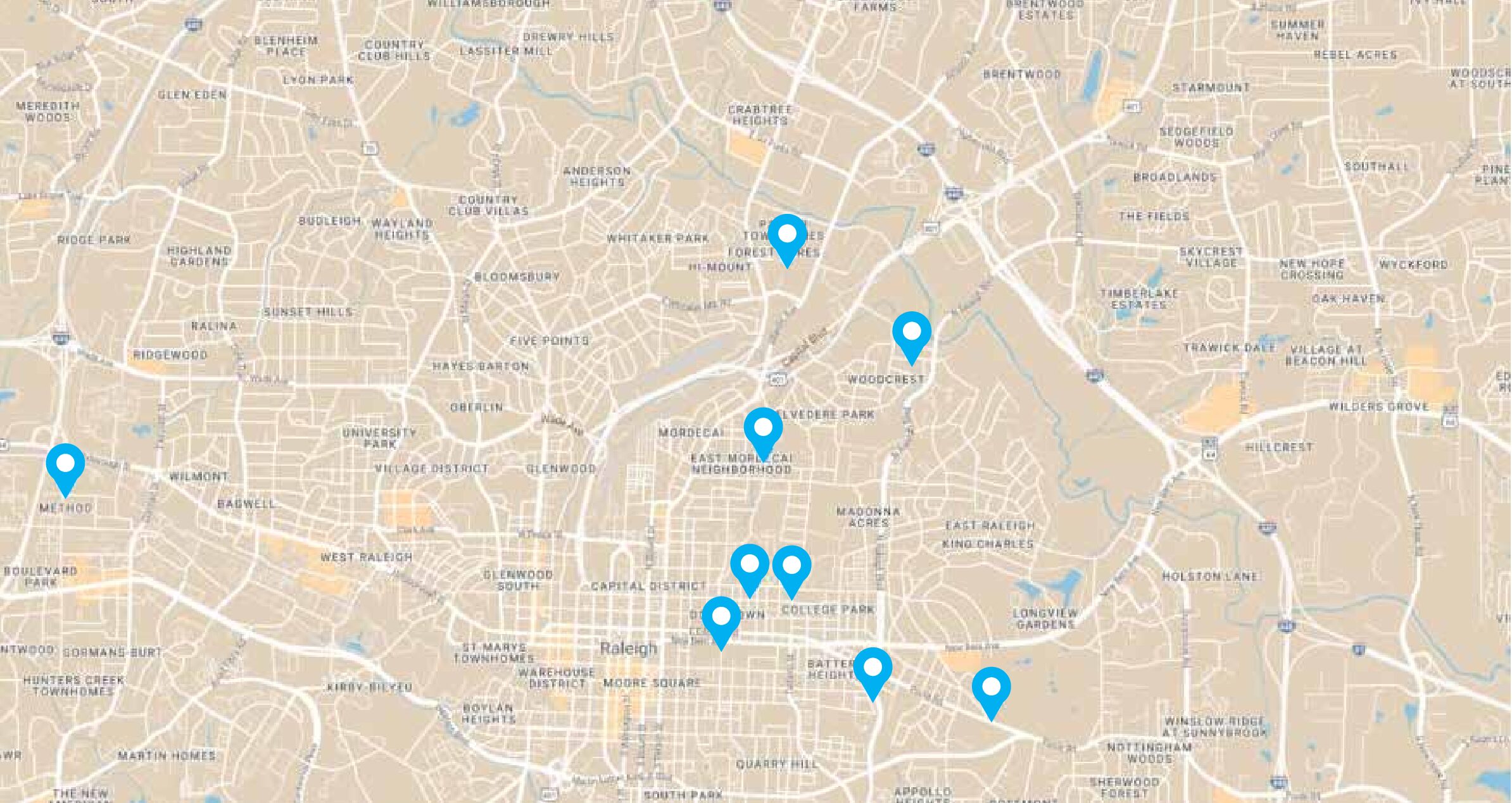The term “missing middle” refers to housing types between detached single-family homes and large apartment buildings. This includes duplexes, triplexes, townhouses, and small apartments.
Prior to the summer of 2021, these housing types were prohibited in many of Raleigh’s neighborhoods. Nearly four years after adopting Missing Middle housing policies that same year, Raleigh is seeing significant activity in this area of development. While a single Hayes-Barton townhome project has dominated headlines, there are actually multiple small-scale developments underway across the city.
Current Development Activity
As of February 2025, Raleigh’s Missing Middle housing pipeline includes:
-
52 Missing Middle subdivisions submitted for approval
-
195 Accessory Dwelling Units (ADU) applications
-
98 townhouse unit applications
Additionally, at least 10 proposed small-scale developments are currently under review within Raleigh’s Administrative Site Review portal. These projects are expected to add nearly 200 units on less than 10 acres within the city limits.
Examples of Ongoing Projects
601 Method Rd: A nine-unit small apartment building near Western Blvd BRT.
1613 Battery Dr: Fourteen new townhomes replacing one single-family home adjacent to Raleigh Blvd.
These developments showcase the city’s efforts to increase housing density while maintaining neighborhood character.
Challenges and Opposition
Despite progress, the Missing Middle policy continues to face challenges.
Legal Battles: The Raleigh Country Club recently petitioned to block a 16-unit townhome development near its golf course.
Ongoing Lawsuits: A judge ruled against a controversial 17-townhome development in the Hayes Barton neighborhood, highlighting the ongoing debate surrounding these projects.
Mixed Results
While the policy has increased housing diversity in some areas, its impact on affordability remains debated. Of the 2,800 new units built under the program, only 203 (less than 10%) are considered affordable.
As Raleigh continues to grow, the Missing Middle approach represents an ongoing experiment in urban housing policy, with both promising developments and persistent challenges. The city will need to monitor and potentially adjust its strategies to achieve the intended goals of increased housing supply and improved affordability.
